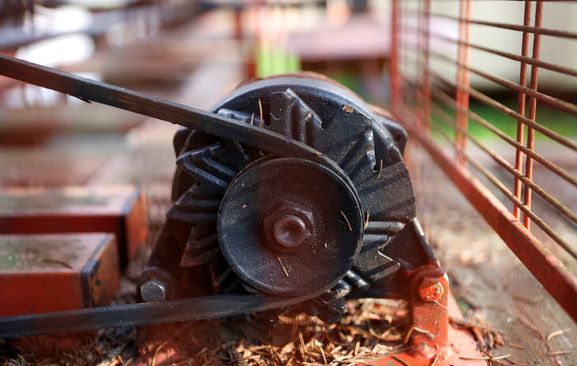Residents of eastern Bosnia's city of Gorazde do not need imaginations to understand the suffering of Ukraine's people. Three decades ago, they endured more than three years of extreme hardship as Bosnian Serbs pummeled their city with rockets and artillery from the surrounding hills.
Alternative source of electricity
The long siege during Bosnia’s 1992-95 interethnic war cut off Gorazde from access to electricity, food, medicine and the outside world. The people there found creative ways to keep lights on and heating working, survival hacks they now are sharing with civilians plunged into darkness and cold by Russia's relentless missile and drone attacks on Ukraine's power grid.
Edin Culov, the Gorazde region's governor, said friends and acquaintances who work for the European Union’s mission to Bosnia, in Sarajevo, contacted him late last year seeking information for a humanitarian effort to provide Ukrainians with an alternative source of electricity.
They specifically wanted any “drawings, photographs, video recordings or anything else” about the “miniature power plants” used in Gorazde back in the 1990s. The plants consisted of home-built paddlewheels mounted on wooden platforms with electrical generators. Locals set them up around a bridge in the Drina River, where barrels and ropes kept them afloat.
Each “plant” had a main supply cable running from its generator to the bridge, from where smaller cables carried the power to buildings. Depending on the volume of water under the span, the contraptions produced enough electricity for Gorazde's straining hospital and for residents living close enough to the river to keep one light bulb on, listen to the radio and occasionally watch television.
A small group of mechanical engineers and electricians who honed their skills in the city's prewar manufacturing industry, which produced everything from weapons to textiles, built the first prototype. Their clever, but simple design allowed DIYers to create the mini plants from engines, alternators, condensers and scrap material scavenged from Gorazde's bombed out factories, vehicles and homes.
Paddlewheels quickly bloomed on the river. Siege survivors credit the contraptions with helping the city hold out and become the only enclave in eastern Bosnia never to be captured by Serb forces. After the war ended, the equipment was removed and dismantled.
In response to the EU request all these years later, Culov said the city collected everything it could find and he went on the radio in Bosnia to solicit surviving documents and memories. The information was delivered to the EU mission in Bosnia, which has shared it with Ukraine, he said.
“I guess they will use the material we provided to develop a few test models and then, if it proves feasible, start mass producing (the miniature) power plants” for distribution around the country, Culov explained.
Among those who responded to Culov’s appeal for information were two surviving members of the original development team.
Aziz Lepenica, who had taught engineering at the city’s technical high school until suffering a stroke a couple of years ago, offered to return to show students how to prepare proper design drawings and technical calculations for Ukraine.
During Bosnia's war, “We made no drawings. We had no time for that,” Lepenica said. “We made all calculations and construction plans in our heads.”
During his teaching years, Lepenica helped his students construct a replica of the homegrown power plants. It was placed on the riverbank, next to Gorazde’s central bridge, in 2016 to serve as a monument to the days when, as Lepenica put it, “life was unbearable, but our morale was high.”
Some 7,000 civilians were killed
“It would mean a lot to us if it turns out we can help the people (of Ukraine) who are being deprived of electricity as we were,” Lepenica said.
Murat Heto, another one of the inventors, also helped prepare documentation for Ukraine.
“With everything we have been through, one would need to be made of wood not to empathize with (Ukrainians),” the retired electrician said, recalling how the lights powered by the miniature power plants developed by his team “made the world of difference” in wartime Gorazde.
Some 7,000 civilians were killed or severely wounded in the city. Residents often went out only at night to avoid unrelenting sniper and artillery attacks. An influx of refugees from surrounding areas nearly doubled the population to 70,000.
While the refusal of Serb forces to allow U.N. aid convoys into Gorazde kept food and medicine in short supply, the power plants were a “symbol of our resolve to resist, to not give in,” Heto said.
“I wish to God it had not happened to us nor to Ukraine, but when people are pushed into a corner and faced with a threat of extermination, everything becomes possible,” he said.







